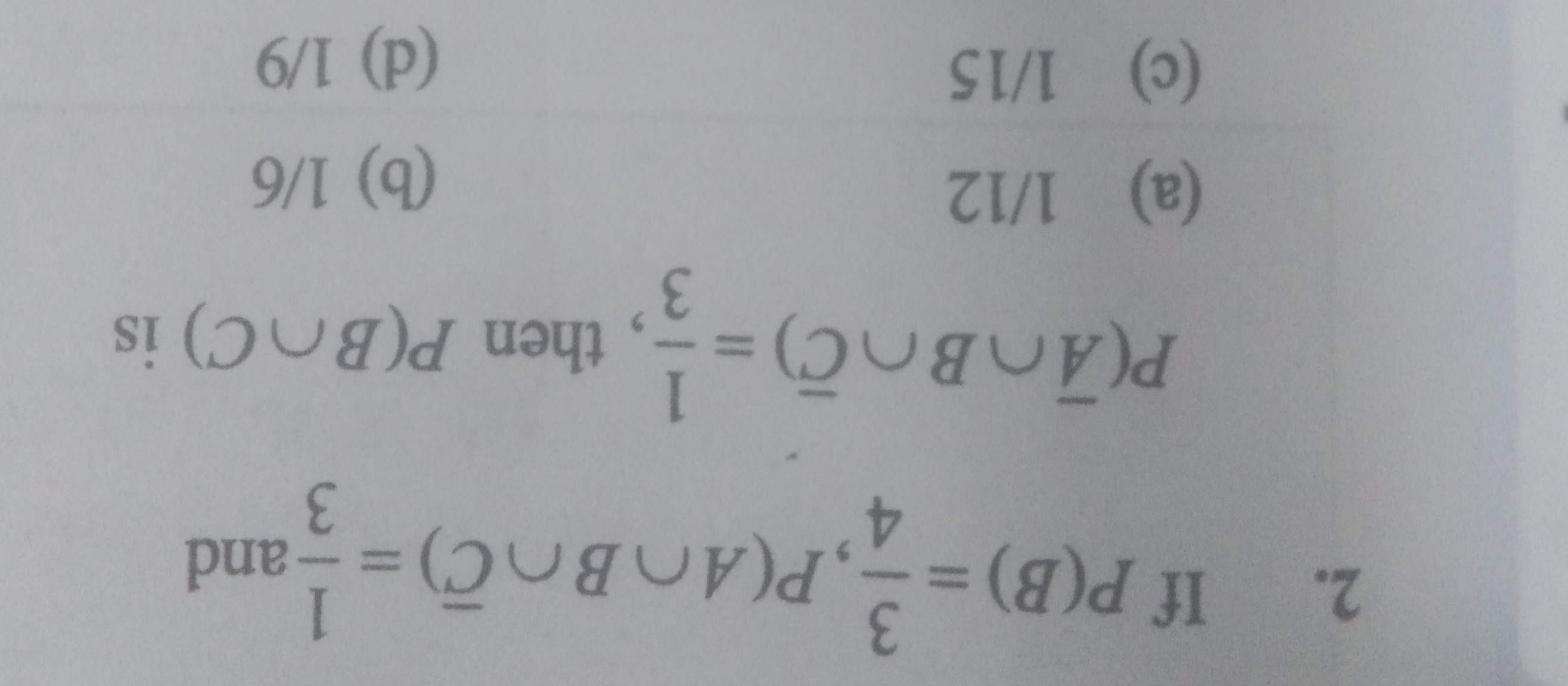Question
Question: If $P(B)=\frac{4}{3}$, $P(\overline{A}\cap B\cap \overline{C})=\frac{1}{3}$ and $P(\overline{A}\cap ...
If P(B)=34, P(A∩B∩C)=31 and P(A∩B∩C)=31, then P(B∩C) is

A
1/12
B
1/6
C
1/15
D
1/9
Answer
1/12
Explanation
Solution
The event B can be partitioned into disjoint events B∩C and B∩C. So, P(B)=P(B∩C)+P(B∩C).
The event B∩C can be partitioned into disjoint events A∩B∩C and A∩B∩C. So, P(B∩C)=P(A∩B∩C)+P(A∩B∩C).
Combining these, P(B)=P(B∩C)+P(A∩B∩C)+P(A∩B∩C).
Rearranging to find P(B∩C): P(B∩C)=P(B)−P(A∩B∩C)−P(A∩B∩C).
The given question has P(B)=34, P(A∩B∩C)=31 and P(A∩B∩C)=31. The value P(B)=34 is inconsistent. Assuming the question intended to be solvable and similar to the similar question, we use the values from the similar question: P(B)=43, P(A∩B∩C)=31 and P(A∩B∩C)=31.
Using the formula: P(B∩C)=43−31−31=43−32=129−8=121.
The final answer is 121.
